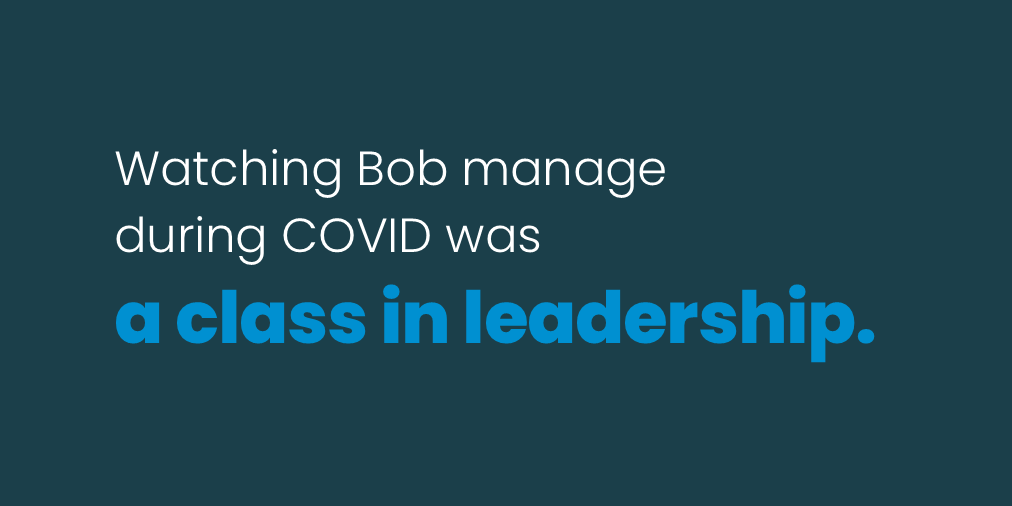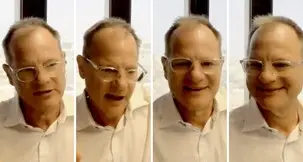
Calamos’ Bob Behan: A veteran distribution exec on leadership, management
I have no issue with Sales being the alpha in the sales/marketing relationship. Sales doesn’t succeed without being assertive—and everyone else working in the overall enterprise (sometimes referred to as “overhead”) needs Sales to be successful. Most marketers confident in the value they bring know better than to knock heads with Sales.
In fact, I’ll go a step further. I’ve never spent 15 minutes with an investment management sales professional and not come away with a different way of looking at the same problem. Made me think I should talk to Sales more!
Which brings us to the subject of today’s post: Calamos Investments Chief Distribution Officer and Executive Vice President Bob Behan, CFA, a guest speaker at a recent Lowe Group retreat. Bob is the Sales alpha at Calamos, where I worked for seven years prior to joining the Lowe Group to head LG Digital.

Bob Behan
Executive Vice President, Chief Distribution Officer
In his role, Bob’s influence is throughout the organization, but his comments to us focused on his leadership, and fierce advocacy, of the Calamos sales team. This includes during one of the firm’s most productive periods—which happened to coincide with the global COVID-19 pandemic. Watching Bob manage during that uncertain time was a class in leadership.
Jody scheduled Bob’s appearance to deepen our team’s understanding of the investment management business, but we thought some of Bob’s comments were too rich to keep to ourselves. He’s a veteran intermediary channel sales executive with insights on a career track that communicators may not be familiar with.
“In the absence of value, there’s cost.”
Bob grew up in a family that operated an appliance parts sales business on Long Island.
“The whole business was built on advice. A customer would come in and say, “My dryer is broken, and I have the whole family coming over. How do I fix this?’ And we’d help. We’d ask them questions, take in all kinds of information, and say, ‘You know what, it’s most likely this and this is what you do.’
“We were not the cheapest, but people would come to us time and time again because we would help them solve their problems. And if we couldn’t, we would refer them to somebody who could.
“Fast forward to what we all do now, it’s the same thing: can you solve somebody’s problem? Can you show them how you can solve their problem and then still sell something?
“It’s relationship building. If they come back to you, it’s because of the relationship, maybe not the cost, it’s the relationship. In the absence of value, there’s cost. If a client or a prospect or doesn’t feel like you’re adding value, then they’re going to look at it and say, ‘this is just an expense.’”
Risk-taking
While at Syracuse University, the first in his family to pursue a college degree, Bob’s intentions to study law were sidetracked by an opportunity to move to Boston for a job in institutional sales for Manulife Financial.
“I think the big takeaway is don’t be afraid to take a risk when you’re young. Don’t limit yourself because you might be afraid. Typically, 99% of the things you worry about never come true.
“Especially as a young person, it’s the best time in life to take risk. Because failure costs very little, and typically you get huge, huge rewards in terms of learning…
“None of us, at least I haven’t, has learned a thing from success. You’re successful. You’re patting yourself on the back, but typically you don’t learn anything. Learning only happens when you fail and a compounding of failure leads to success. That’s typically the way you succeed next time.”
“None of us, at least I haven’t, has learned a thing from success.”
Bob described himself as continually preparing for his next job.
“I read all these books that were way above what I was doing, about leadership or about being a CEO. I believe that when someday comes, you have to be ready. You can’t learn how to do the next thing the day you’re put into it.”
On leadership
“Leadership and leading organizations is great because typically it has good pay attached to it and, you know, status and whatever. But it is a huge responsibility. It’s a huge responsibility and you have to really want that responsibility and savor it.
“You can’t lead people unless they know how much you care. The way I see it is that you lead from the front, you take on the hard projects yourself, you delegate and you coach.
“There’s just stuff that comes up. People’s families get sick. They go through divorces, their parents die.
“But this is where the EQ of a leader is important. We have a lot of people with super high IQs, but they lack this emotional empathy or connection. I think leadership comes out of [personal] connection.
“You can’t lead people unless they know how much you care.”
A test of Bob’s connection with his team occurred in February 2020, the start of the U.S. breakout of COVID-19.
“We were all personally living in a world of upside down. Who knows what was going to happen? We had health worries, we had career worries, we had family worries. We had all this uncertainty.
“Many of us could just sort of tap in and work from home, but if you think about our [Sales] people who are out remote, calling on financial advisors five days a week, all of a sudden they’re quarantined at home. They don’t know when they’re going to see clients again. They feel like they’ve been reduced to an internal [wholesaler], they’re worried about their jobs, the market’s crashing. We had a massive level of anxiety on a personal level.
Bob’s near immediate response was to schedule 9 a.m. Zoom Sales meetings, daily at first and then on Mondays, Wednesdays and Fridays.
“Let’s see how we can get people connected so they can function in their job, whatever that looks like now. They’re going to need to have a connection to their coworkers because they’re used to having a connection to their clients. When a salesperson is out with their advisors, that’s their family. [Wholesalers] walk into somebody’s office four or five times a day. It’s not their office. They don’t have an office. They do this every day, all day, every day, and they get in the car and go. How they spend their days was upended.
“My ultimate goal with the Zooms was that I wanted to make sure we continue to stay engaged with clients because that’s the lifeblood of what we do.
Bob’s direction to the Sales team: “You gotta get up. You gotta shower. You gotta turn your camera on.’ Humans are pretty good at routine. If you get up and you put on your suit or your dress and have your coffee and then you go about your day, that’s a lot easier than wondering what am I supposed to do right now.
“The plan was we were going to share ideas on how to deal with a pandemic, and be accessible to clients and see what’s going on in the marketplace. A massive information sharing sprouted up out of it.
The few months of Zoom meetings were moderated by Bob and then he began to assign the hosting and agenda to the external and internal teams.
“I wanted to see them hone their Zoom skills. Some got really nervous about presenting to their peers, even though it’s a friendly group.
The meetings lasted 30 minutes, and no more.
“Don’t tell me you’re going to be here for 30 minutes and take 40. At 30, you’re done.
“The net effect was that it really kept people connected to each other. We shared success stories and failures and it made us all better. It helped with what I called the rolling freakout that was happening. You know, for the last month, Judy was fine and all of a sudden, Judy was like, ‘Holy ****, my life is never going to be the same again.’ Everyone went through something like that.
“We also tried to get people back out as soon as we could. Shockingly, so many of our clients told us they hadn’t seen a wholesaler in six months.”
Marketing, Product Management, Business Intelligence, Investment Management and even Compliance on occasion took part in these Sales Zooms, extending the value of being connected and relying on a stream of information from the office. They centered us, too. To Marketing, they provided raw content that we were able to run with. We heard about other workers being adrift during the early days of COVID but not us—thanks to these meetings, we had more than enough to do. And everything we created Sales was eager to use, albeit in different, digital ways.
Proof of the power of the connection? 2020, the year of the pandemic, was one of Calamos’ strongest years. Sales were up 50% from the prior year, according to Bob.
Marketing interactions with Sales
“Bob, what do marketing communications professionals need to better understand about Sales? How does marketing make the biggest impact?” Jody asked.
“I think the biggest impact Marketing can make is to be sure they have good stories to tell because buyers buy stories that are backed up by data.
“There’s a great book by Robert Cialdini—Influence and the Psychology of Persuasion—based on all kinds of studies he performed. Essentially, there are lots of different ways people buy, but there’s still part of your brain that wants to be told a story.
“Today many advisors have set up these walls of analysis because they don’t want to buy on the story. But story is what gets them.
“Also, keep in mind how hard the wholesaler’s job is. It can be a grind of a job. Just remembering that can go a long way toward fostering a kind of more empathetic marketing.”
Our thanks to Bob for meeting with us, and consenting to our sharing of these comments.
Subscribe.
Receive the latest news and insights from Lowe Group.